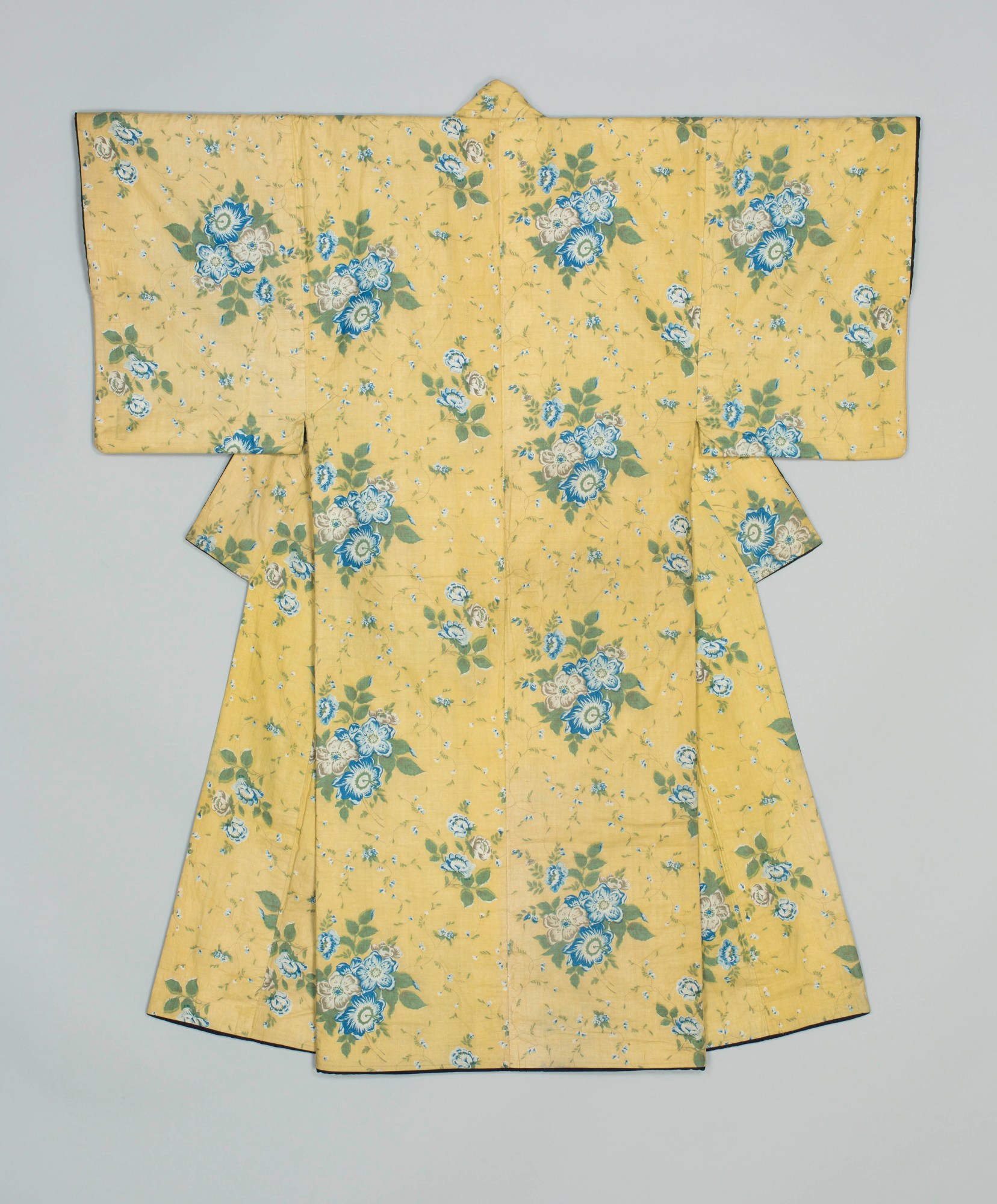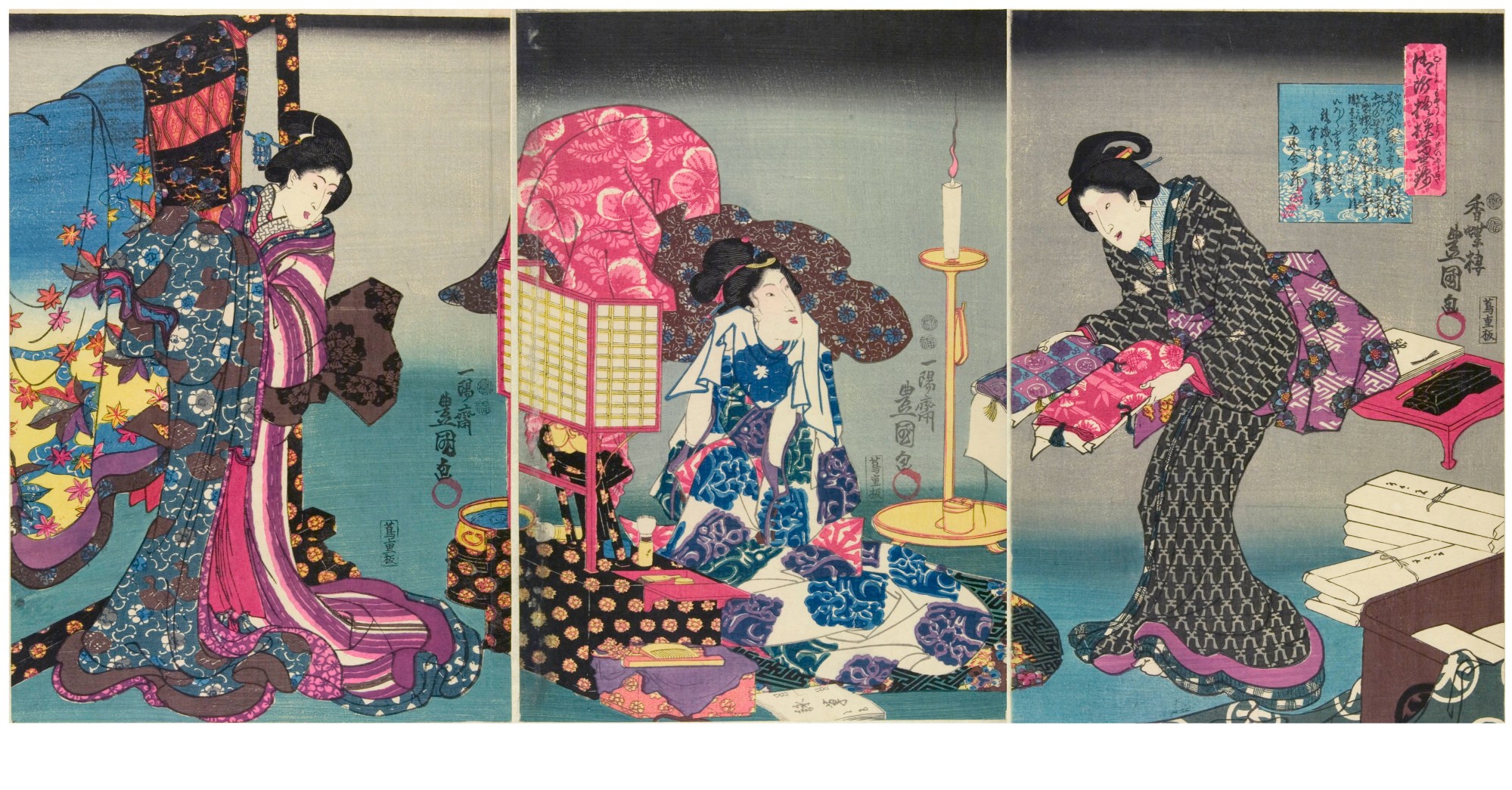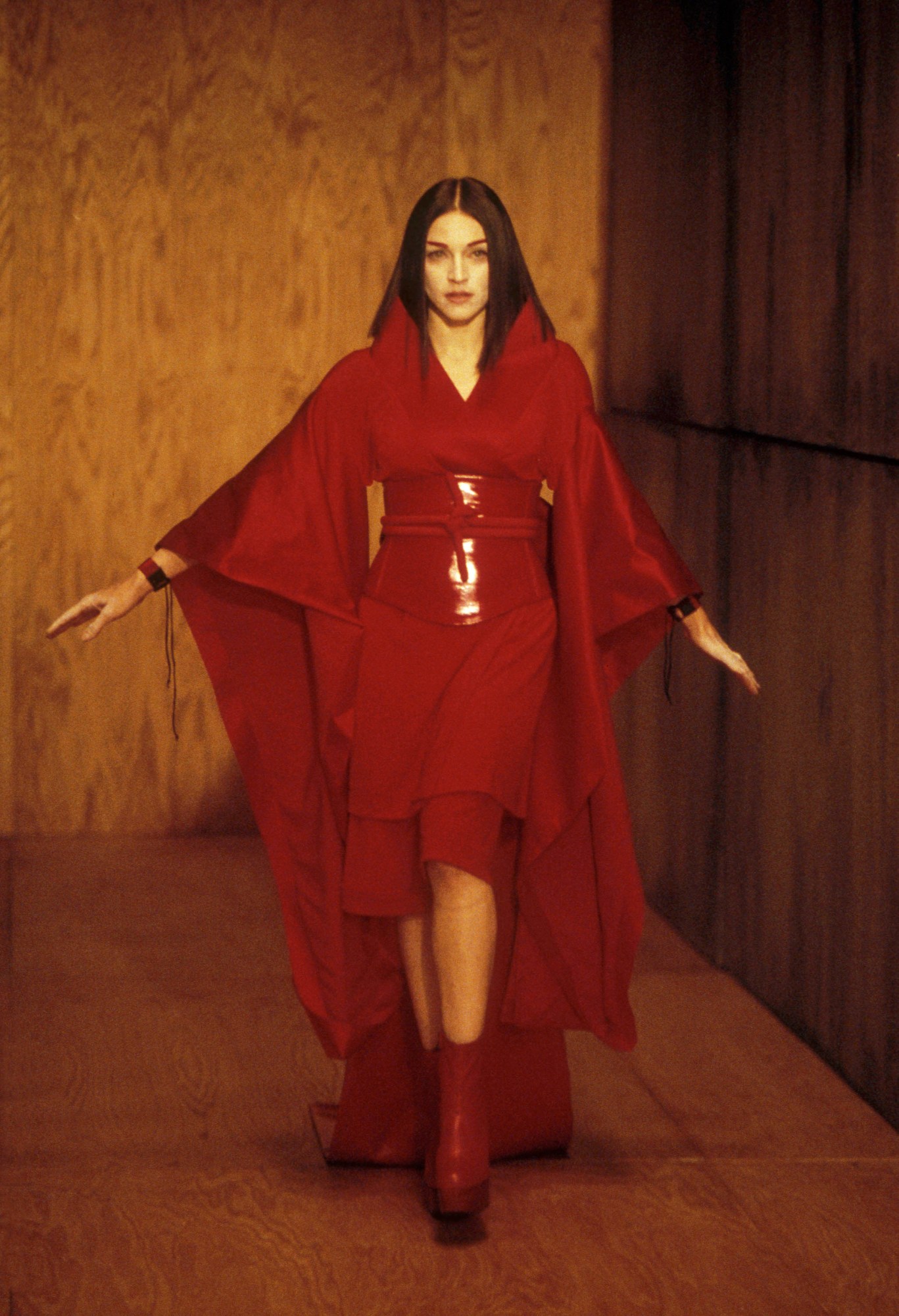Scroll through your iPhone’s roll call of emoji and you’ll eventually land on the ‘Asian’ section: little cartoons of kneeling geisha, triangular-roofed temples, red envelopes and, of course, the kimono. The garment is an instant cipher for Japan, as much cultural shorthand as symbol of tradition. And though it is often presented as an unchanging icon — similar in shape and adornment for centuries, far removed from the ebbs of flows of, say, Western fashion and design — the kimono has a unique story of its own.
The Victoria & Albert Museum’s exhibition, Kimono: Kyoto to Catwalk, was the first major international show to chronicle its evolution, from its ubiquity as civilian dress in 16th century Japan and its splendour and adornment in the 17th and 18th century Edo period, all way through to its migration to Europe via Dutch merchant ships, and its post-WWII displacement from Japanese dress to Japanese-inspired dress on Western catwalks. Not to mention its precarious place in today’s increasingly murky debate around cultural appropriation (Kim Kardashian infamously tried to trademark the word for her shapewear line last year).

In other words, such a simple garment (it’s crafted from one piece of fabric, with only a single seam) has a very complex past. “In the West we always look at the cut and construction of our clothing — where the waistline or hemline is — and that’s what tells us how fashion changes,” says Anna Jackson, the exhibition’s curator. “So that’s one reason why in the West, there tends to be a perception that there isn’t fashion elsewhere in the world. But in the kimono, what’s important is what’s happening on the surface and there’s a very different relationship between the clothing and the body.” In fact, the body inside a kimono is fairly irrelevant — it’s one-size-fits-all, with surface-level nuances for gender, age, class and wealth.
Where the V&A’s exhibition becomes especially interesting is the way it dissects the germination of the kimono throughout Western culture and fashion. Couturiers as far back as Paul Poiret, Cristobal Balenciaga, Yves Saint Laurent and Madeleine Vionnet were all inspired by the garment. Before that, 19th-century artists in France like Degas and Manet painted society women in déshabillé kimono, and artistic forces such as Jane Morris and Virginia Woolf adopted it as a liberating alternative to oppressive Edwardian corsetry. More recently, it has ignited the fashion fantasies of John Galliano (whose origami-like, wasp-waisted versions for Dior were far from the real thing) to Jean Paul Gaultier (whose red iteration Madonna famously wore in her Ray of Light era). Alexander McQueen, whose version Björk wore on the cover of her 1997 album Homogenic, famously closed his AW03 show with a 20-foot kimono billowing down snowy tundra — and in turn, inspired the coming-out scene in the Oscar-winning Memoirs of a Geisha (some of the costumes from which are on display in the exhibition).

Today, the kimono’s place in the canon of fashion history is undeniable, both as a symbol of Japan but also as simply a garment that has been interpreted around the world. It has travelled the globe via complex trade routes (arriving in Britain via the Dutch) and in Kyoto today, Chinese tourists rent mass-produced kimono by the day to pose in photos set against cherry blossom or autumn leaves in the city’s grand temples — the irony being that many of these versions are actually Made in China. And of course, over the years (or even centuries) non-Japanese designers have drawn on its distinctive sleeves, the ‘ ukiy– o’ dyeing techniques, or traditional obi belts — and often the inspiration isn’t as literal as, say, Galliano’s overt ode to Japan with Kabuki faces, cherry blossom sets and sparkling Hokusai embellishment (which is on display in the exhibition).
Now as a younger generation of designers are reinterpreting the kimono — both in Japan and around the world — they are navigating a cultural minefield that can be precarious and heated. “I couldn’t make clothes very well, so I decided to make a kimono because it’s basically straight lines,” explains Central Saint Martins graduate Milligan Beaumont, whose final-year collection was full of quilted hoodie-kimono hybrids with bright graphics and Japanese iconography inspired by manga, Tokyo street style and Japanese toys (Christina Aguilera quickly snapped up the entire collection to wear on stage). Although the British designer has never been to Japan, she was an avid consumer of its culture and delved into its wood-block techniques and geisha culture in both her collection and thesis. “I had big discussions with the curators and my Japanese friends and they loved that it’s being reinterpreted — they want to share it with the world,” she says.

For the 78-year-old kimono artisan Kunihiko Moriguchi, a ‘Living National Treasure’ in Japan, it’s all part of an evergreen cultural exchange. “Japanese culture has long been exported to Europe,” he points out. Kunihiko produces only a handful of collectible kimono each year using ancient, vegetable-based ‘yūzen’ resist-dyeing techniques — he actually trained as a graphic designer in Paris, bringing back what he learnt to Kyoto, which is still the centre of Japanese luxury production. He adds: “It’s part of a positive cycle that’s been happening for centuries.”
A few blocks away, Yamaguchi Genbei’s family home has been a kimono workshop for ten generations. Here, he restores and emulates the imperial craft of bygone years, creating obi belts woven with mother of pearl and gold cloth. Last year, Giorgio Armani visited Genbei’s house and spent five hours immersed in his work, and design teams from Chanel and Nike have also visited. Is he worried that the design teams of these Western brands might copy his work? Not at all, he says laughing, explaining that his level of craftsmanship is so rare and complex that they couldn’t if they tried.

“As the cultural appropriation arguments went on, it became very much that the kimono is this almost sacred garment that ought to be revered and respected and you mustn’t tamper with it,” continues Anna Jackson. “That you mustn’t wear it if you’re not Japanese and you’re not wearing it in a ‘proper’ way. But what are you doing by trying to say ‘I don’t want to be racist’ or stereotyping Asians? You’re completely atrophying the kimono. You’re denying it by saying it has no possibility for evolution, that it’s never changed, that it’s never had any impact on the West. You’re also denying it any kind of future because if you could only wear it in the right and proper way, how on earth is any kimono designer today ever going to make a living?”
So, instead of showing traditional kimono alongside Western fashion, the V&A’s show places it in its own context with its own history. Western fashion is a part of that narrative and traditional kimono are also displayed on mannequins (instead of 2D stands) to humanise them and show that they were made to be worn. The exhibition also showcases some of the young Japanese designers (and shoppers, captured by street style imagery) who are reviving the kimono with a sense of modernity and cross-cultural appeal.

Look no further than 30-something Hiroko Takahashi’s clean-lined cotton kimono, replete with circles and straight lines, which imbue her designs with casual ease. She grew up wearing traditional kimono for formal celebrations, including one passed down through generations of women in her family. However, she feels the influence of anime has broadened the garment’s appeal, making it more casual for a generation who don’t want to look traditional. “That really changed the whole ordeal of having to be traditional,” she explains. “You can mix it with different things.” Whereas her grandparent’s generation were guardians of Japanese tradition, she adds, her parents’ generation rejected it in favour of international dress codes. There are parallels in designers such as Yohji Yamamoto and Rei Kawakubo, for instance, finding success in Paris and rejected traditional ideas of Japanese aesthetics. “Now, the grandchildren are continuing the business and they have completely different ideas. Because they’re young, they have less restrictions or limitations in terms of their thinking process.”
As a result, the kimono is also returning to its gender-fluid roots after years of being associated with (often eroticised) feminine Japanese stereotypes, such as the geisha. “I think that young men are becoming more interested in it because with society becoming so homogenous and flat due to technology, young Japanese people are starting to think about what ‘Japan-ness’ is, and its originality,” explains Takayuki Yajima, the founder of menswear kimono line Y. & Sons. He’s a perfect example of what Hiroko talks about, his label is a contemporary offshoot of his family’s 103-year-old kimono chain, Kimono Yamato, which also sells Comme des Garcons wallets and international brands in its sleek Tokyo store. “For me, designers in the west being inspired by kimono is a great thing, because culture always changes with each generation, which creates new culture. It is necessary to embed new interpretations from abroad into kimono, without worrying about what you should not change and what you can change.”
Kimono: Kyoto to Catwalk was scheduled to run until 21 June 2020 at the Victoria & Albert Museum, London. With the museum closed due to the global coronavirus outbreak, there is currently no information about when the exhibition will re-open, or if its run will be extended.
